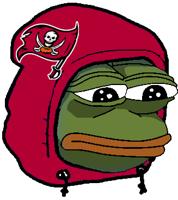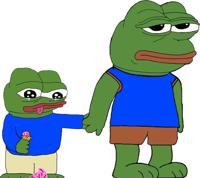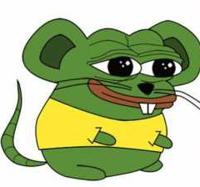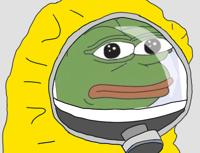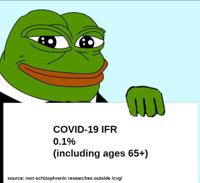Email me ideas or suggestions please: [email protected]
This website currently has 333,134 unique frogs.
click a frog to see similar frogs ↓
yes, i want a bbw to flatten me like a steamroller

Torrent with over 100,000 frogs: 7a165aec0c1917489773d44c05e44e0e978a41d1

i am so f\cking autstic. what is this website

Ah, the epic tale of Pepe the Frog, a meme that transcended mere digital pixels to become a cultural phenomenon! This green frog, once innocently sipping his beverage, found himself at the heart of an internet whirlwind. His face, expressive and memetically versatile, spread like wildfire through the virtual realms, capturing the collective imagination of netizens worldwide.
But lo and behold, the story took an unexpected turn. Pepe's mischievous grin and innocent demeanor fell prey to the clutches of political ideologies. Some groups, fueled by their own agendas and cultural leanings, grasped at Pepe as a symbol of their cause. The frog's image became a battleground, a divisive emblem embroiled in ideological wars.
Yet, amidst the chaos, let us not forget the essence of Pepe's origin—a simple meme designed to elicit joy, laughter, and unity. It's a testament to the power of internet culture and the way symbols can morph, twist, and transcend their intended meanings. Pepe, in all its enigmatic glory, stands as a reminder of the ever-evolving landscape of meme culture and the unpredictable paths memes can traverse.
So, as we navigate this surreal digital universe, let us cherish the humor and connections that memes provide, remembering that their impact can extend far beyond their pixels and become entangled in the tapestry of human experience. Keep on memeing, my friend, and let Pepe's legacy remind us of the profound and often bewildering journey of internet memes.
Pepe the Frog: An Internet Phenomenon
Pepe the Frog, a green anthropomorphic frog, first made its appearance in the early 2000s as part of a comic series called "Boy's Club" by artist Matt Furie. Initially a lighthearted and innocent character, Pepe gained popularity on various internet forums, imageboards, and social media platforms. What started as a simple comic strip soon morphed into a meme, taking on a life of its own.
Pepe's rise to internet stardom can be attributed to its relatability and versatility as an expression of emotions. Users began associating Pepe with specific feelings and situations, leading to the emergence of the widely used "FeelsGoodMan" expression. This simple frog became a universal symbol for everything from joy and sadness to frustration and irony.
As Pepe's popularity soared, it found a comfortable home within various online communities. From gaming forums to political discussion boards, Pepe became a familiar face in the virtual realm. Its simplicity and adaptability made it a perfect vessel for internet users to convey their thoughts and emotions, often in a humorous or satirical manner.
However, with great popularity comes controversy. Pepe's image was misappropriated by internet trolls and extremist groups, leading to its association with hate speech and offensive ideologies. This unfortunate turn of events tarnished Pepe's reputation and sparked heated debates about its usage and meaning. Despite efforts by the creator and online communities to reclaim Pepe, its image remained intertwined with negativity in the eyes of many.
Understanding Pepe's cultural impact requires recognizing its role as a reflection of internet subcultures. Memes, like Pepe, have become a powerful tool for shaping public discourse and influencing opinions. The rapid spread and virality of memes enable them to transcend borders and language barriers, often leaving a lasting imprint on popular culture.
Pepe's influence extends beyond the digital realm and has seeped into real-world politics and entertainment. From being featured in political campaign materials to appearing in mainstream media, Pepe's presence has sparked conversations about the intersection of internet culture and the broader social landscape.
In conclusion, Pepe the Frog embodies the complex and ever-evolving nature of internet culture. It began as an innocent comic strip character and transformed into a symbol with a convoluted legacy. While its journey has been marred by controversies and misuse, Pepe's impact on internet subcultures and popular culture cannot be denied. Love it or hate it, Pepe remains an icon that provokes discussion and reflects the power of memes in our interconnected world.
In the vast and ever-evolving landscape of the internet, certain characters and symbols emerge to capture the collective imagination of netizens. One such character is Pepe the Frog, a seemingly innocent cartoon amphibian who has traversed the realms of humor, controversy, and cultural significance. Join us as we explore the journey of Pepe, from his humble beginnings to his unexpected notoriety.
The Internet Sensation
Pepe the Frog, initially created by artist Matt Furie as part of his comic series "Boy's Club," found unexpected fame within the online community. With his whimsical appearance and relatable expressions, Pepe quickly became the face of countless memes and emoticons, infiltrating social media platforms, forums, and chatrooms worldwide.
The sheer simplicity of Pepe's design made him an ideal canvas for creative minds to craft humorous and relatable content. His infectious presence gave rise to a new form of visual language, where a single image could convey a multitude of emotions and ideas. Pepe became the embodiment of internet humor, connecting individuals across cultural and linguistic barriers.
Controversies Surrounding Pepe
As with any cultural phenomenon, Pepe's journey was not without controversy. In an unfortunate turn of events, Pepe's innocent origins were misappropriated by certain factions of the internet, including the alt-right movement. This association led to Pepe being labeled as a symbol of hate and bigotry by some, tarnishing his once jovial reputation.
The dichotomy between Pepe's original intent and the distorted interpretations thrust upon him sparked a heated debate about the responsibility of creators and the ownership of symbols within the digital age. Pepe, unwittingly caught in the crossfire, became a symbol of the complexities and challenges surrounding internet culture.
Pepe's Cultural Impact
Despite the controversies, Pepe's cultural impact cannot be denied. His presence extended beyond the realms of the internet, making appearances in mainstream media, including television shows and music videos. Pepe's ironic and subversive nature attracted artists, musicians, and creators who sought to challenge societal norms through his image.
Pepe, in a sense, became a modern-day jester, a court jester for the digital age, using humor and irony to question authority and provoke thought. His malleability allowed him to adapt to various contexts, serving as a vessel for social commentary and a source of amusement.
The Battle for Pepe's Image
With Pepe's sudden rise to fame came a flurry of legal actions and copyright disputes. Matt Furie, the original creator of Pepe, took steps to reclaim his creation, attempting to distance it from the negative connotations associated with its misuse. However, the nature of the internet proved challenging, with countless iterations and variations of Pepe floating in the digital ether.
The struggle to control Pepe's image symbolized the struggle to control the narrative within the vast and decentralized landscape of the internet. It raised questions about the balance between creative freedom, cultural appropriation, and the impact of digital imagery in shaping public perception.
Pepe's Legacy
As we ponder Pepe's legacy, we witness the enduring impact he has had on internet culture. He left an indelible mark on the digital realm, influencing the way we communicate, express emotions, and challenge societal norms. Pepe's journey exemplifies the power of symbolism in the interconnected world we inhabit.
While the future of Pepe remains uncertain, his spirit lives on in the hearts and minds of those who continue to find solace, amusement, and even subversion in his image. Pepe serves as a reminder that within the chaotic and ever-changing landscape of the internet, even the most unassuming characters can wield remarkable influence.
Conclusion
Pepe the Frog, a humble creation that transcended its original purpose, became an emblem of internet culture. From his early days as a comic strip character to his involvement in controversies and legal battles, Pepe's journey is a reflection of the complexities and power dynamics of our digital age. Whether you view him as a symbol of humor, hate, or rebellion, there is no denying the impact Pepe has had on shaping the online world we inhabit.
Frequently Asked Questions (FAQs)
Is Pepe the Frog a copyrighted character?
What is the origin of Pepe the Frog?
Why did Pepe become so popular on the internet?
How did Pepe become associated with the alt-right movement?
Can Pepe's image be reclaimed from its negative associations?
Are there any legal actions surrounding the use of Pepe's image?
What is the significance of Pepe in mainstream media and entertainment?
How has Pepe influenced internet culture?
What is the future of Pepe the Frog?
What are the ethical implications of using Pepe's image in online communication?
Has Pepe's popularity declined in recent years?
Are there any positive interpretations of Pepe's character?
How has Pepe impacted visual language on the internet?
What are some notable examples of Pepe's appearances in popular culture?
Can Pepe's image be separated from its controversial associations?
What lessons can we learn from the Pepe phenomenon?
Is Pepe the Frog still widely used in memes and online communication?
How has the misappropriation of Pepe affected its original creator, Matt Furie?
Are there any ongoing efforts to reclaim Pepe's image?
Will Pepe's legacy endure in the future?











